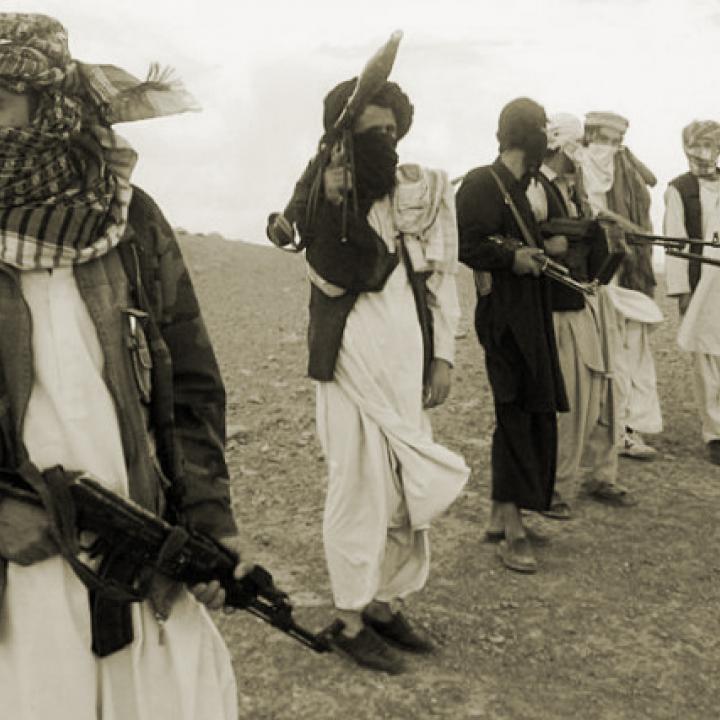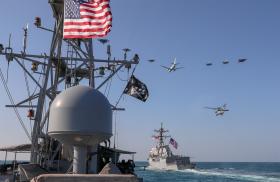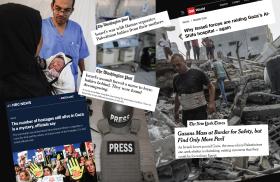

Fifteen years from now, when classified documents produced today begin to be declassified, we will surely look back with some discomfort and see just how far off some of our judgments were when written in 2008. Such is the nature of intelligence assessments. What would be worse, however, would be for us to look back fifteen years hence and find ourselves stuck in much the same place we are today.
This reflection is prompted by reading a recently declassified August 1993 report, “The Wandering Mujahidin: Armed and Dangerous,” written by the State Department’s Bureau of Intelligence and Research (INR). Its subject was the possible spillover effect of Afghan Mujahidin fighters and support networks moving on to fight in other jihad conflicts, alongside other militant Islamic groups worldwide. Much of the report could be applied to the themes Daniel Byman raises in a recent post on this blog, about Al Qaeda in Iraq.
For example, writing in 2008 Byman notes that “fighters who went to Iraq learned a new set of capabilities that are now dispersed to the far corners of the earth.” Compare that to the 1993 report, which found that “the support network that funneled money, supplies, and manpower to supplement the Afghan Mujahidin is now contributing experienced fighters to militant Islamic groups worldwide.” When these veteran fighters dispersed, the report presciently predicted, “their knowledge of communications equipment and experiences in logistics planning will enhance the organizational and offensive capabilities of the militant groups to which they are returning.”
Writing in 2008, Byman very rightly noted that “many of the foreign fighters in Iraq will go home, and even small numbers of fighters may radicalize and change the orientation of existing local groups, as happened with Fatah al-Islam in Lebanon.” A section of the 1993 report, entitled “When the Boys Come Home,” noted that these veteran volunteer fighters “are welcomed as victorious Muslim fighters of a successful jihad against a superpower” and “have won the respect of many Muslims—Arab and non-Arab—who venerate the jihad.”
At that time, these Mujahidin returned to Yemen, Egypt, Sudan, Algeria, Libya and beyond, where they trained local militants and further radicalized local groups. Libya, the 1993 report notes, was once one of the largest backers of Afghan warlord Gulbuddin Hekmatyar (since then designated a terrorist by the United States and the UN) but “now fears the returning veterans and has lashed out publicly against them.” Indeed, several of these Libyan veterans formed the Libyan Islamic Fighting Group (LIFG) and became senior members of core Al Qaeda. In 2006, the U.S. government would note that “The Libyan Islamic Fighting Group threatens global safety and stability through the use of violence and its ideological alliance with al Qaida and other brutal terrorist organizations.”
The 1993 report describes several trends that remain issues of serious concern today, including some of the same streams of financial support that continue to finance today’s militant Islamist groups. To the present-day reader, who will digest this 1993 report with an eye towards the conflict in Iraq, perhaps the most disturbing analytical judgement (which could have been pulled out of a current National Intelligence Estimate), is this:
The war-era network of state sponsors and private patrons which continues to support the mujahidin has no rigid structure and no clearly defined command center, but receives guidance from several popular Islamic leaders and financial support from charitable Islamic organizations and wealthy individuals. Key figures who have emerged as the mentors of the mujahidin provide one another with the contacts and conduits needed to keep the militant groups they support in business.
The network circa 1993 was not an exact parallel to today’s combination of Al Qaeda operatives (a smaller but no less committed cadre) and like-minded followers of a virtually-networked, leaderless jihad. But the 1993 warning of an unstructured network of jihadists moving on from their current area of operations to other battlefronts could have been written this morning.
Middle East Strategy at Harvard



